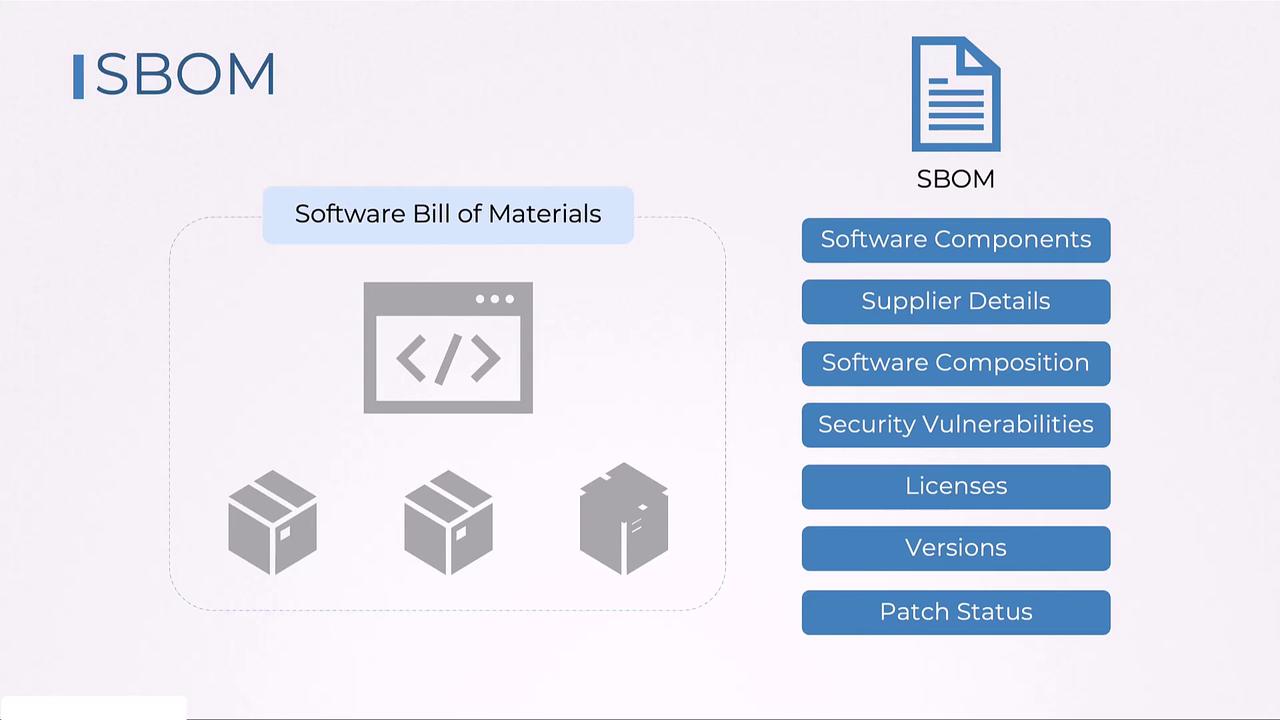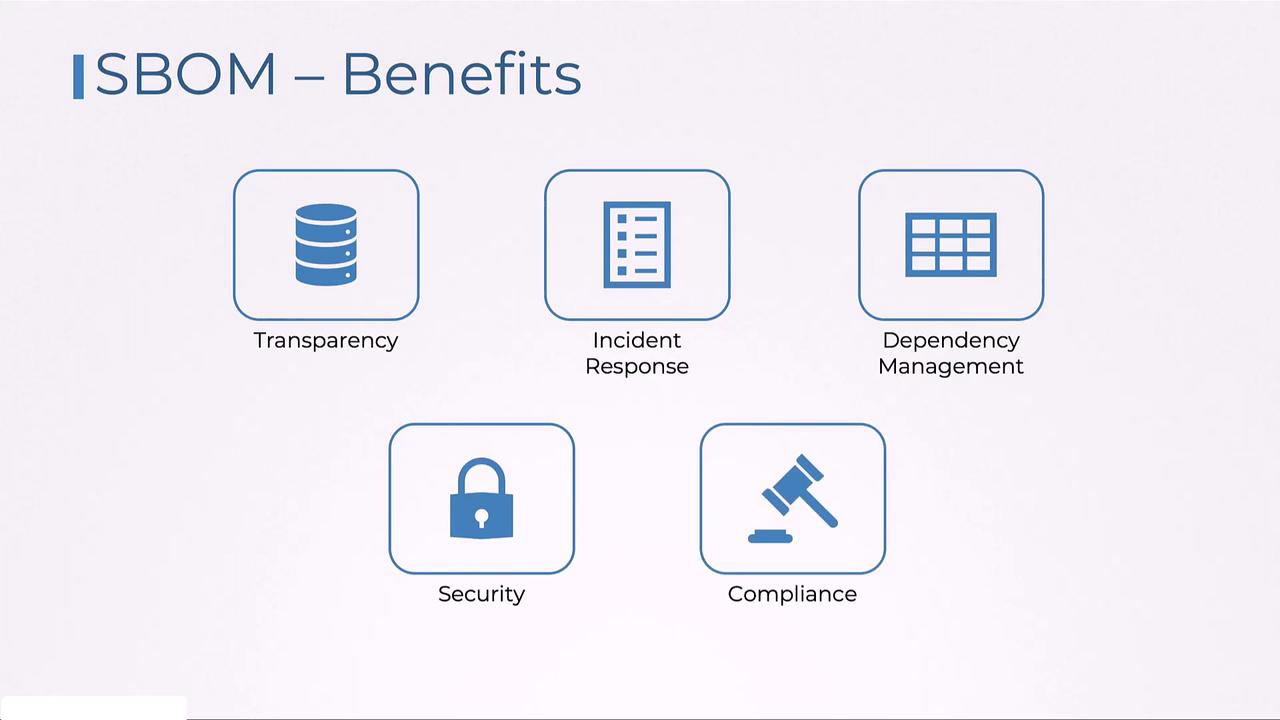Certified Kubernetes Security Specialist (CKS)
Supply Chain Security
What is SBOM and Why Its Important
In this article, we explore the concept of a Software Bill of Materials (SBOM) and outline its benefits.
An SBOM is a comprehensive list of all components that comprise a software application. Much like a recipe details the ingredients, instructions, and allergen information for a meal, an SBOM provides transparency about a software system’s composition—including open-source libraries and third-party dependencies. It offers crucial details such as licenses, versions, and patch statuses.
Transparency Boosts Security
An SBOM not only reveals what is inside the software but also helps manage security risks and ensures integrity. In the event of a security incident, teams can rapidly pinpoint affected components and evaluate vulnerabilities, enabling swift corrective actions such as applying patches or replacing compromised elements.
Furthermore, SBOMs simplify dependency management by mapping out components and their interdependencies. This systematic documentation ensures all software parts remain current, thereby reducing risks associated with outdated or insecure dependencies. By cataloging components alongside their vulnerabilities, an SBOM significantly enhances overall software security. Many industries require adherence to regulatory standards regarding software composition, and an SBOM supports compliance by documenting licensing information meticulously.

Key benefits of an SBOM include:
- Improved transparency in software composition
- Quicker incident response during security events
- Efficient management of software dependencies
- Enhanced security through detailed vulnerability tracking
- Easier compliance with regulatory standards
These benefits are particularly advantageous when using open-source components, ensuring that every element adheres to necessary regulatory guidelines.

SBOM Example
Consider the following excerpt as an example of an SBOM. It showcases key components typically included, such as the component name, version, supplier details, licensing, dependencies, and associated vulnerability information:
{
"package": {
"name": "grep",
"SPDXID": "SPDXRef-Package-deb-grep-a8613391d2f5a59d",
"versionInfo": "3.8-5",
"supplier": "Person: Anibal Monsalve Salazar ([email protected])",
"originator": "Person: Anibal Monsalve Salazar ([email protected])",
"downloadLocation": "NOASSERTION",
"filesAnalyzed": true,
"packageVerificationCode": {
"packageVerificationCodeValue": "6dab867e2a9f53bf5faee39422e2c82e551ca7d8d"
},
"sourceInfo": "acquired package info from DPKG DB: /usr/share/doc/grep/copyright, /var/lib/dpkg/info/grep.list",
"licenseConcluded": "NOASSERTION",
"licenseDeclared": "GPL-3.0-only AND GPL-3.0-or-later",
"copyrightText": "NOASSERTION",
"externalRefs": [
{
"referenceCategory": "SECURITY",
"referenceType": "cpe22Type",
"referenceLocator": "cpe:2.3:a:grep:grep:3.8-5:*:*:*:*:*:*:*"
},
{
"referenceCategory": "PACKAGE-MANAGER",
"referenceType": "url",
"referenceLocator": "pkg:deb/debian/[email protected]?arch=amd64&distro=debian-12"
}
]
}
}
This example highlights essential SBOM details including metadata about the package, supplier and originator information, licensing, and security references. By providing this comprehensive overview, an SBOM becomes a crucial tool in managing software security and mitigating supply chain risks.
For further details on software security best practices and SBOM implementations, consider exploring additional industry resources and documentation.
Watch Video
Watch video content